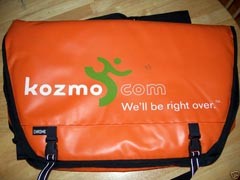6. Pets.com

Pets.com’s talking sock puppet mascot was intriguing enough to be featured in parades and Super Bowl commercials, but it didn’t give anyone incentive to buy their pet food on the Internet. Part of the problem was waiting for your order to be shipped. As C/Net aptly observes, “after they ordered kitty litter, a customer had to wait a few days to actually get it. And let’s face it, when you need kitty litter, you need kitty litter.” Pets.com dug themselves into an even deeper hole by offering huge shipping discounts to entice people to order. This negated the value of the few orders people did place, as even those were not ultimately profitable. In spite of these obvious red flags, Pets.com managed to raise $82.5 million in a February, 2000 IPO. Not surprisingly, though, the company collapsed a mere nine months later.
7. Boo

Boo.com showed the world that Internet startup failures could, indeed, go international. The United Kingdom-based online fashion retailer also testified to another startup-killing habit: using JavaScript doo-dads and quirky Flash-based navigation in order to dazzle and impress instead of fulfilling genuine consumer needs. These tactics make for slow-loading sites today, but they were downright fatal during the dial-up days of 1998-2000. Boo also underestimated the hassles of being a “global company”, such as dealing with the many different languages and tax structures of the various countries it attempted to do business in. The result was all too predictable. After a couple years of lackluster sales and unmet projections, Boo liquidated its assets in May, 2000 after blowing $160 million in venture funds.
8 . Kozmo

Billed by as “the shining example of a good idea gone bad”, Kozmo actually shocked many people by failing. The idea was to let city dwellers order late-night impulse items like movies and snacks that would be delivered free in an hour. It was a big hit with its target market, but before long, Kozmo became a victim of its own success. The very thing that made it appealing – free, fast delivery – made the business model unsustainable. It was simply not possible to deliver items that cheap for free and still turn a profit. By the time Kozmo began charging for delivery it was already too late, and the $280 million in funding was lost when the company closed its doors in March, 2001.
9. Kibu

Kibu is one of the few Internet flame-outs that had the good sense to close up before burning through all the money it raised. They were mainly a victim of poor timing. By the time of their closing in October, 2000, investors had were beginning to get burned by the dot com crash and grew increasingly suspicious of dot com companies. Consequently, the big-name Silicon Valley investors who were backing Kibu promptly jumped ship on the company just as they were beginning to attract users from its target market. Many in the industry consider the Kibu abandonment a precursor to the end of the venture capital backed gravy train for Internet startups during this time.
10. Go.com
Not even the mighty Walt Disney Company could insulate itself from the shock of the dot com bust. Their briefly-successful Go.com portal (also known as the “Go Network”) was intended to be an all-service destination a la Yahoo, Lycos, and Alta-Vista. It seemed like a halfway decent idea at first, and Go even managed to partner with big-name content providers like ESPN and ABCNews. Unfortunately, being run by Disney placed restrictions (such as bans on mature content) on Go that none of the other portals had to contend with. As a result, the website was never able to recoup or justify the millions of dollars spent on promoting it. Go.com was shut down in Janurary, 2000 and Disney took a $790 million bath on the whole project.